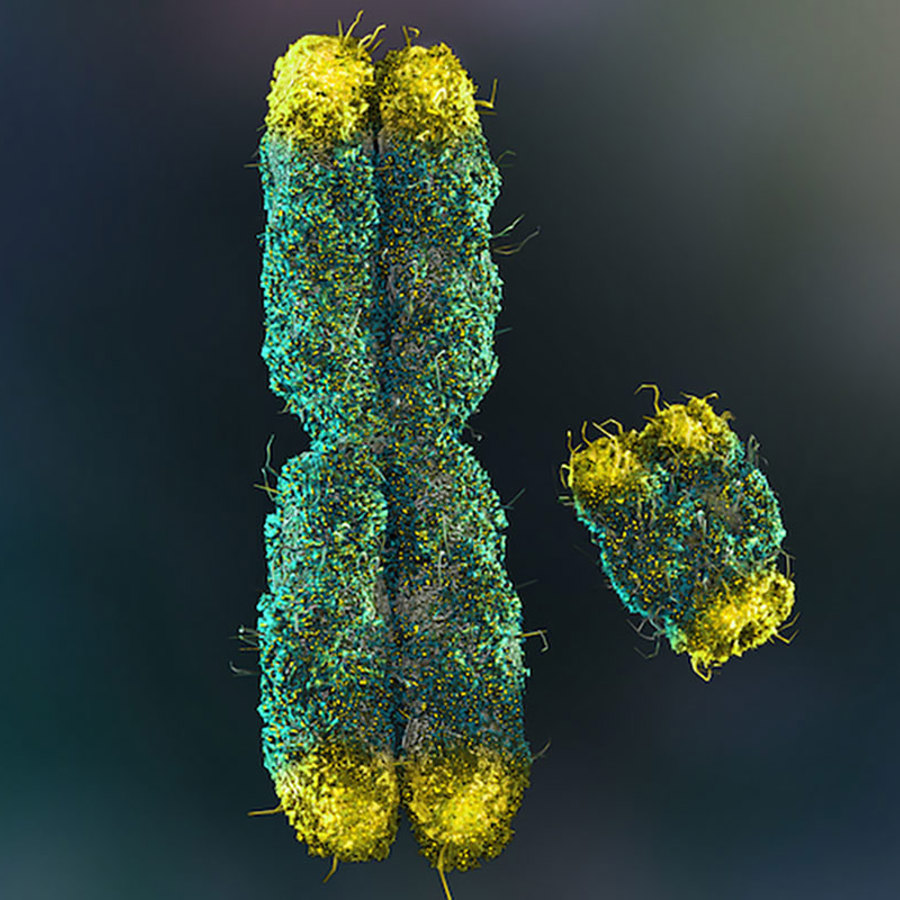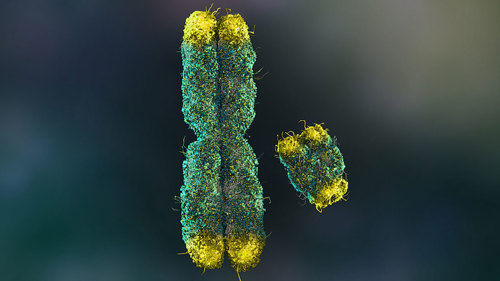
Is the Y chromosome going to keep getting smaller?
September 22, 2004

- Related Topics:
- Y chromosome,
- Chromosomes,
- Human evolution,
- Genetic sex
A curious adult from California asks:
“I recently read that the male Y chromosome used to have 1,438 genes, and only has 45 now. If the chromosome continues to degrade, are men going to go extinct?”
This is an active area of debate right now with no clear answer. Some predict that within a few hundred thousand years, the Y chromosome will disappear completely (along with people if evolution or scientists don't do something about it). Other people think it has stabilized and will be around for a long time to come.
Around 300 million years ago, the ancestors of mammals had two X chromosomes. Then, in one of those whiz-bang evolutionary moments, the SRY gene was born on one of these X chromosomes.
What this new gene did was tell the body to ignore everything else and become a male. Now, in order to survive and not be weeded out, the gene also needed to stop exchanging DNA with the other X chromosome.
One of the ways DNA is mixed in cells is through a process called recombination. As you know, all chromosomes come in pairs except the Y chromosome. In recombination, DNA is exchanged between these pairs of chromosomes.
Recombination both mixes genes up so that we are all unique and repairs broken genes. To keep from getting the SRY gene “fixed”, the Y chromosome stopped recombining with most of the X chromosome.
While this saved the SRY gene, it was disastrous for the Y chromosome. The Y chromosome shrunk and shrunk and shed over 1000 genes to its 78 today. (The 45 number you quote is a number that was predicted before the Y chromosome was sequenced.)

So now what? Does the Y chromosome continue its decline until males and the human race are wiped out? Or has it stabilized at this level retaining all the genes needed for maleness? As I said, there is no clear answer yet ...
Two findings from the sequencing of the Y chromosome supported the idea that the Y chromosome will be around for a long time to come. First, there were lots more genes than people expected. People predicted between 20 and 45 genes when in fact there were 78. This means that the Y chromosome is not deteriorating as fast as was previously thought.
The other thing they realized was that the Y chromosome has actually developed a way to recombine with itself to fix its errors. There are 2 copies of many of the Y chromosome's most important genes. What happens is that the duplicate copies of the genes exchange DNA within the same chromosome. This finding makes some scientists think that the Y may have stabilized at its present level.
Other scientists aren't so sure. They point to examples in nature of mammals that have apparently evolved past the need for a Y chromosome. For example, a weird little rodent from Asia called the mole vole has completely lost its Y chromosome and the SRY gene!
So how does it get males without the SRY gene? The SRY gene actually is a master switch – it turns on some genes that turn on other genes in what biologists call a “signal cascade.” What the little mole vole has done is found a way to turn on those genes without SRY.

No one yet knows what triggers these little guys use to make males, but they decide who is male and who is female without a Y chromosome. There are also two species of lemmings where there are females that are XY. Apparently, there is a gene on their X chromosome that overrides the Y.
It is hard to say whether in some far distant future, the sex of our kids will be determined by something other than the presence of the Y chromosome. Maybe we’ll be like turtles and some outside factor like temperature will determine whether we are male or female.

Author: Dr. Barry Starr
Barry served as The Tech Geneticist from 2002-2018. He founded Ask-a-Geneticist, answered thousands of questions submitted by people from all around the world, and oversaw and edited all articles published during his tenure. AAG is part of the Stanford at The Tech program, which brings Stanford scientists to The Tech to answer questions for this site, as well as to run science activities with visitors at The Tech Interactive in downtown San Jose.
 Skip Navigation
Skip Navigation
